From Inner Topological Structure to Functional Nanofibers: Theoretical Analysis and Experimental Verification
Abstract
:1. Introduction
2. Hall–Petch Effect and Wool’s Inner Topological Structure
3. Geometric Potential Theory for Inner Topological Structure
4. Experimental Design
5. Experimental Verification
5.1. Materials and Instruments
5.2. Instrumentation
5.3. Solution Preparation
6. Results and Discussion
6.1. Bubble Morphology
6.2. Morphological Characterization (SEM) of Nanofiber
6.3. Machine Property Test of Nanofiber Membranes
7. Conclusions
Author Contributions
Funding
Institutional Review Board Statement
Informed Consent Statement
Conflicts of Interest
References
- Gao, X.; Jiang, L. Biophysics: Water-repellent legs of water striders. Nature 2004, 432, 36. [Google Scholar] [CrossRef] [PubMed]
- Parker, A.R.; Lawrence, C.R. Water capture by a desert beetle. Nat. Cell Biol. 2001, 414, 33–34. [Google Scholar] [CrossRef] [PubMed]
- Feng, X.J.; Jiang, L. Design and creation of superwetting/antiwetting surfaces. Adv. Mater. 2006, 18, 3063–3078. [Google Scholar] [CrossRef]
- Vukusic, P.; Hallam, B.; Noyes, J. Brilliant whiteness in ultrathin beetle scales. Science 2007, 315, 348. [Google Scholar] [CrossRef] [Green Version]
- Hensel, R.; Moh, K.; Arzt, E. Engineering micropatterned dry adhesives: From contact theory to handling applications. Adv. Funct. Mater. 2018, 28, 1800865. [Google Scholar] [CrossRef]
- Qiu, W.; Patil, A.; Hu, F.; Liu, X.Y. Hierarchical structure of silk materials versus mechanical performance and mesoscopic engineering principles. Small 2019, 15, 1903948. [Google Scholar] [CrossRef]
- Hu, T.; Kaplan, D.L.; Omenetto, F.G. Silk materials-A road to sustainable high technology. Adv. Mater. 2012, 24, 2824–2837. [Google Scholar]
- Chen, Z.; Zhang, H.; Lin, Z.; Lin, Y.; Esch, J.H.; Liu, X.Y. Mechanical Properties: Programing Performance of Silk Fibroin Materials by Controlled Nucleation. Adv. Funct. Mater. 2016, 26, 9084. [Google Scholar] [CrossRef] [Green Version]
- Shao, Z.; Vollrath, F. Materials: Surprising strength of silkworm silk. Nat. Cell Biol. 2002, 418, 741. [Google Scholar]
- Omenetto, F.G.; Kaplan, D.L. New opportunities for an ancient material. Science 2010, 329, 528–531. [Google Scholar] [CrossRef] [Green Version]
- Zhu, B.; Wang, H.; Leow, W.R.; Cai, Y.; Loh, X.J.; Han, M.-Y.; Chen, X. Silk fibroin for flexible electronic devices. Adv. Mater. 2016, 28, 4250–4265. [Google Scholar] [CrossRef]
- Tian, Y.; Jiang, X.; Chen, X.; Shao, Z.; Yang, W. Doxorubicin-Loaded magnetic silk fibroin nanoparticles for targeted therapy of multidrug-resistant cancer. Adv. Mater. 2015, 26, 7393–7398. [Google Scholar] [CrossRef]
- Kürnsteiner, P.; Wilms, M.B.; Weisheit, A.; Gault, B.; Jägle, E.A.; Raabe, D. High-strength Damascus steel by additive manufacturing. Nat. Cell Biol. 2020, 582, 515–519. [Google Scholar] [CrossRef] [PubMed]
- Bonderer, L.J.; Studart, A.R.; Gauckler, L.J. Bioinspired Design and Assembly of Platelet Reinforced Polymer Films. Science 2008, 319, 1069–1073. [Google Scholar] [CrossRef] [PubMed]
- Aizenberg, J.; Weaver, J.C.; Thanawala, M.S.; Sundar, V.C.; Morse, D.E.; Fratzl, P. Skeleton of Euplectella sp.: Structural hierarchy from the nanoscale to the mocroscale. Science 2005, 309, 257–258. [Google Scholar]
- Wang, Y.; Choo, H. Influence of texture on Hall-Petch relationships in an Mg alloy. Acta Mater. 2014, 81, 83–97. [Google Scholar] [CrossRef] [Green Version]
- Tian, D.; Zhou, C.J.; He, J.H. Hall-Petch effect and inverse Hall-Petch effect: A fractal unification. Fractals 2018, 26, 1850083. [Google Scholar] [CrossRef]
- Tian, D.; Zhou, C.J.; He, J.H. Strength of bubble walls and the Hall–Petch effect in bubble-spinning. Text. Res. J. 2019, 89, 1340–1344. [Google Scholar] [CrossRef]
- Fan, J.; Shang, X.M. Fractal heat transfer in wool fiber hierarchy. Heat Transf. Res. 2013, 44, 399–407. [Google Scholar] [CrossRef]
- Li, X.X.; He, J.H. Nanoscale adhesion and attachment oscillation under the geometric potential. Part 1: The formation mechanism of nanofiber membrane in the electrospinning. Results Phys. 2019, 12, 1405–1410. [Google Scholar] [CrossRef]
- Liu, Y.; He, J.H. Bubble Electrospinning for mass production of nanofibers. Int. J. Nonlinear Sci. Numer. Simul. 2007, 8, 393–396. [Google Scholar] [CrossRef]
- Yang, R.; He, J.; Xu, L.; Yu, J. Bubble-electrospinning for fabricating nanofibers. Polymer 2009, 50, 5846–5850. [Google Scholar] [CrossRef]
- Peng, N.-B.; Liu, Y.-Q.; Xu, L.; Si, N.; Liu, F.-J.; He, J.-H. A Rachford-Rice like equation for solvent evaporation in the bubble electrospinning. Therm. Sci. 2018, 22, 1679–1683. [Google Scholar] [CrossRef]
- He, J.H.; Wan, Y.Q.; Xu, L. Nano-effects, quantum-like, properties in electrospun nanofibers. Chaos Solitons Fractals 2007, 33, 26–37. [Google Scholar] [CrossRef]

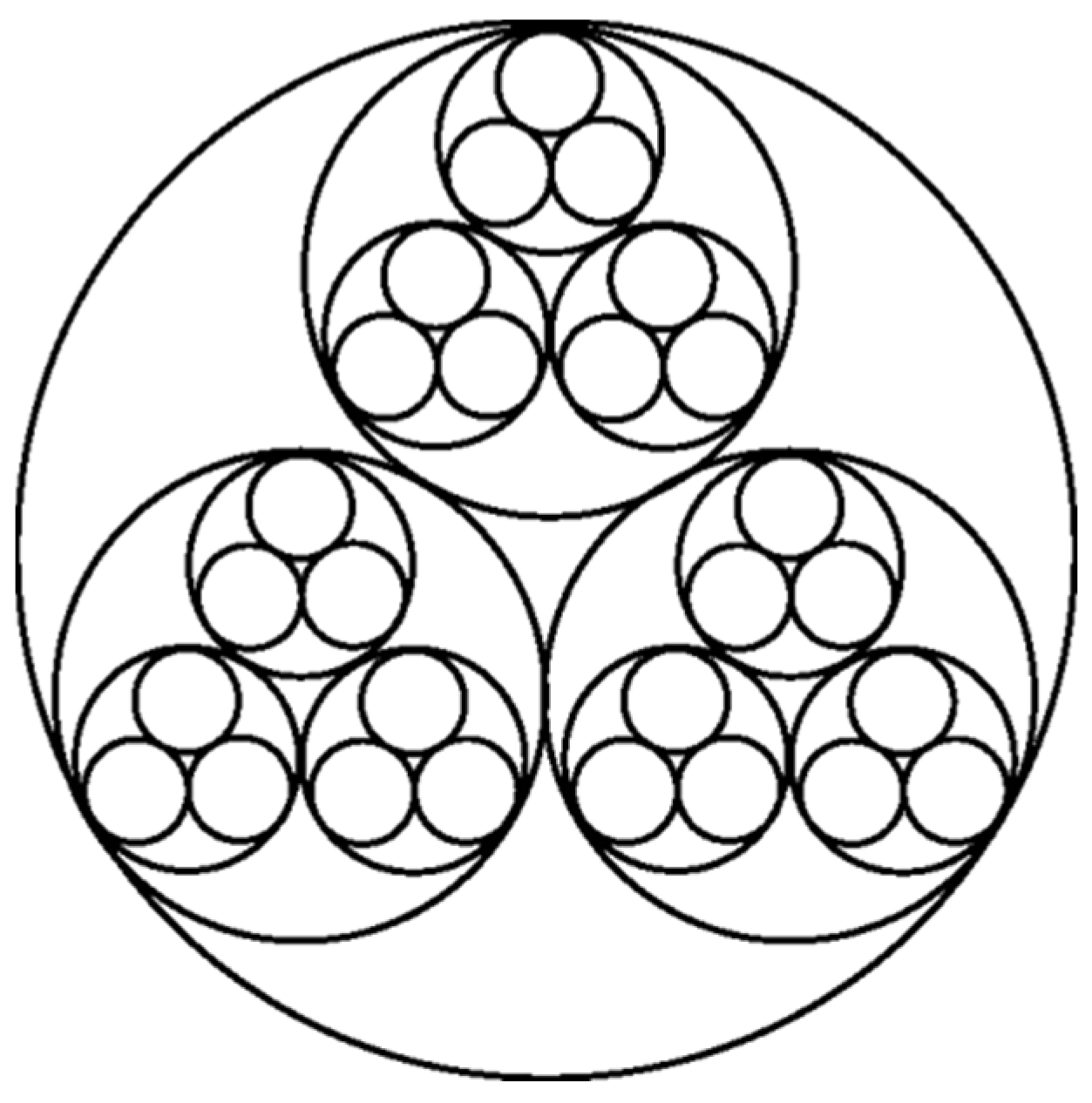
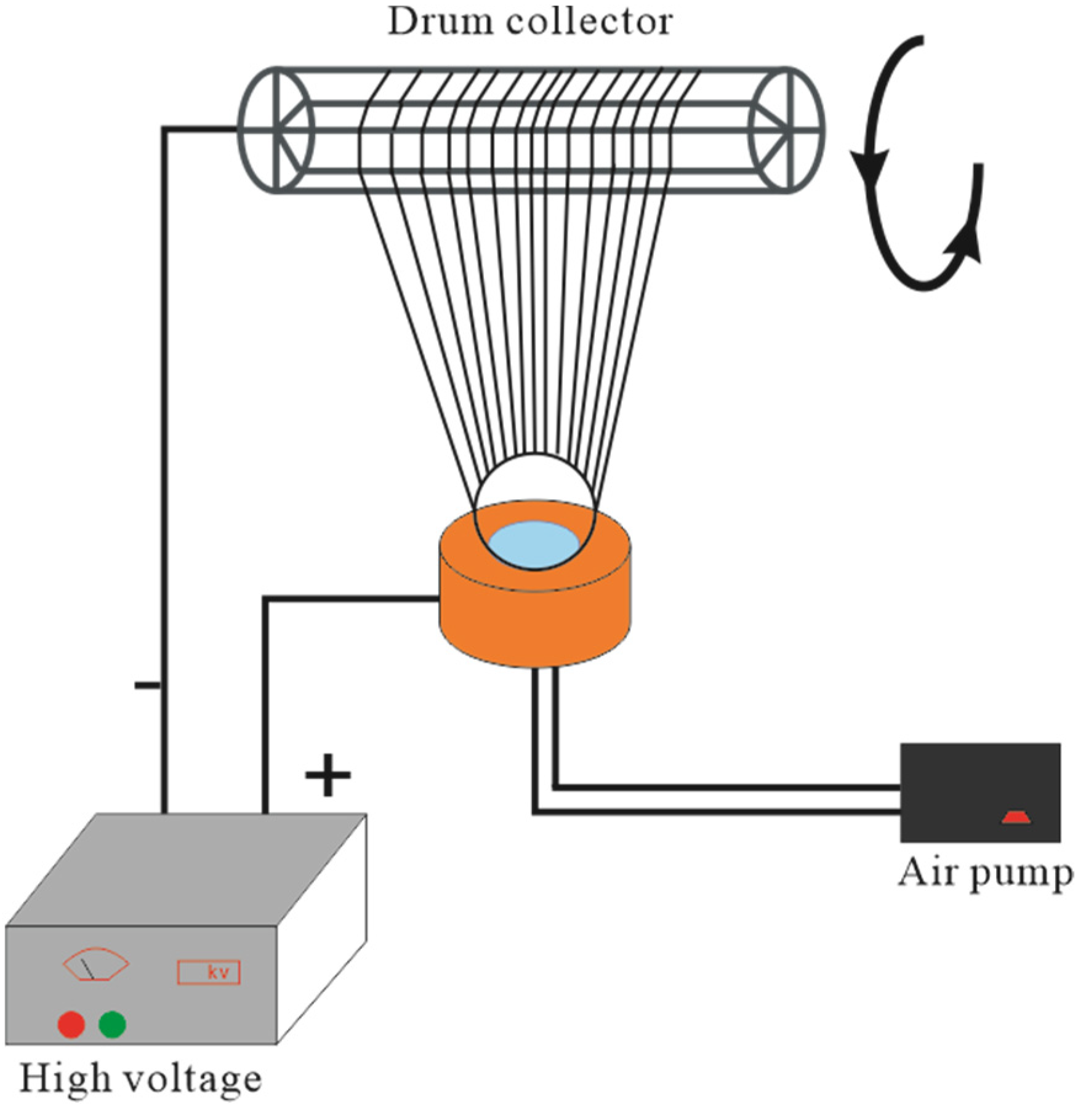
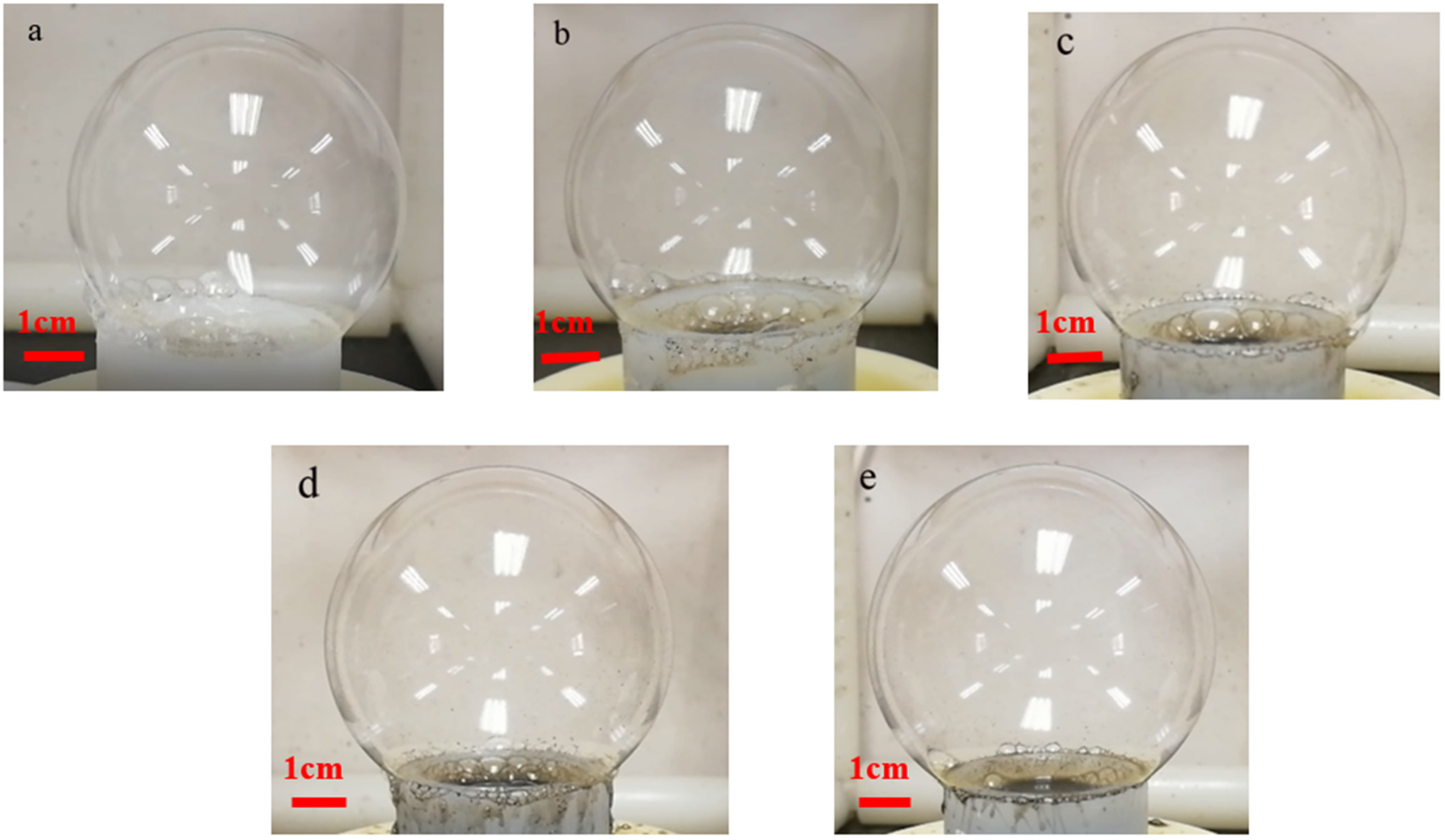
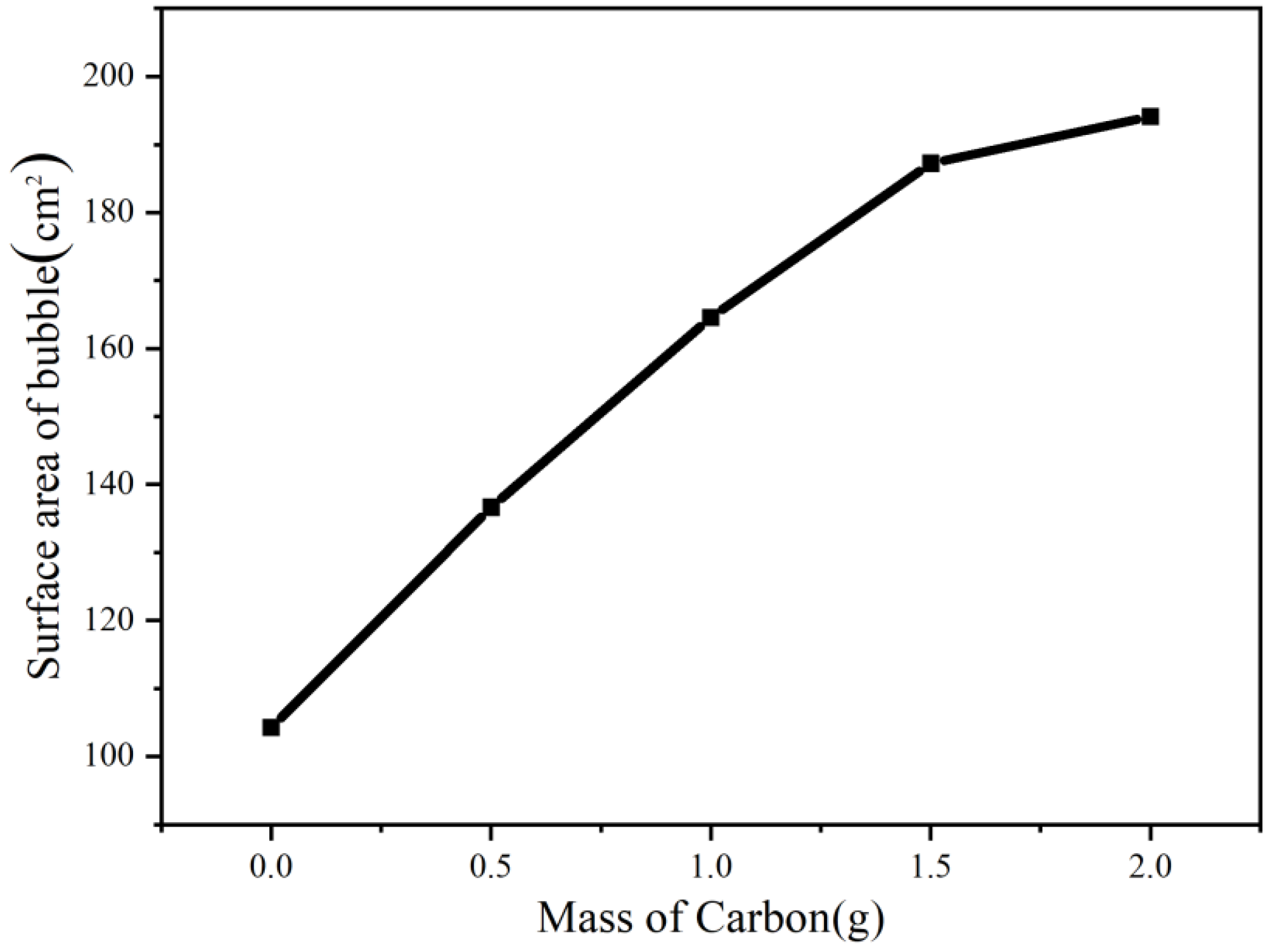

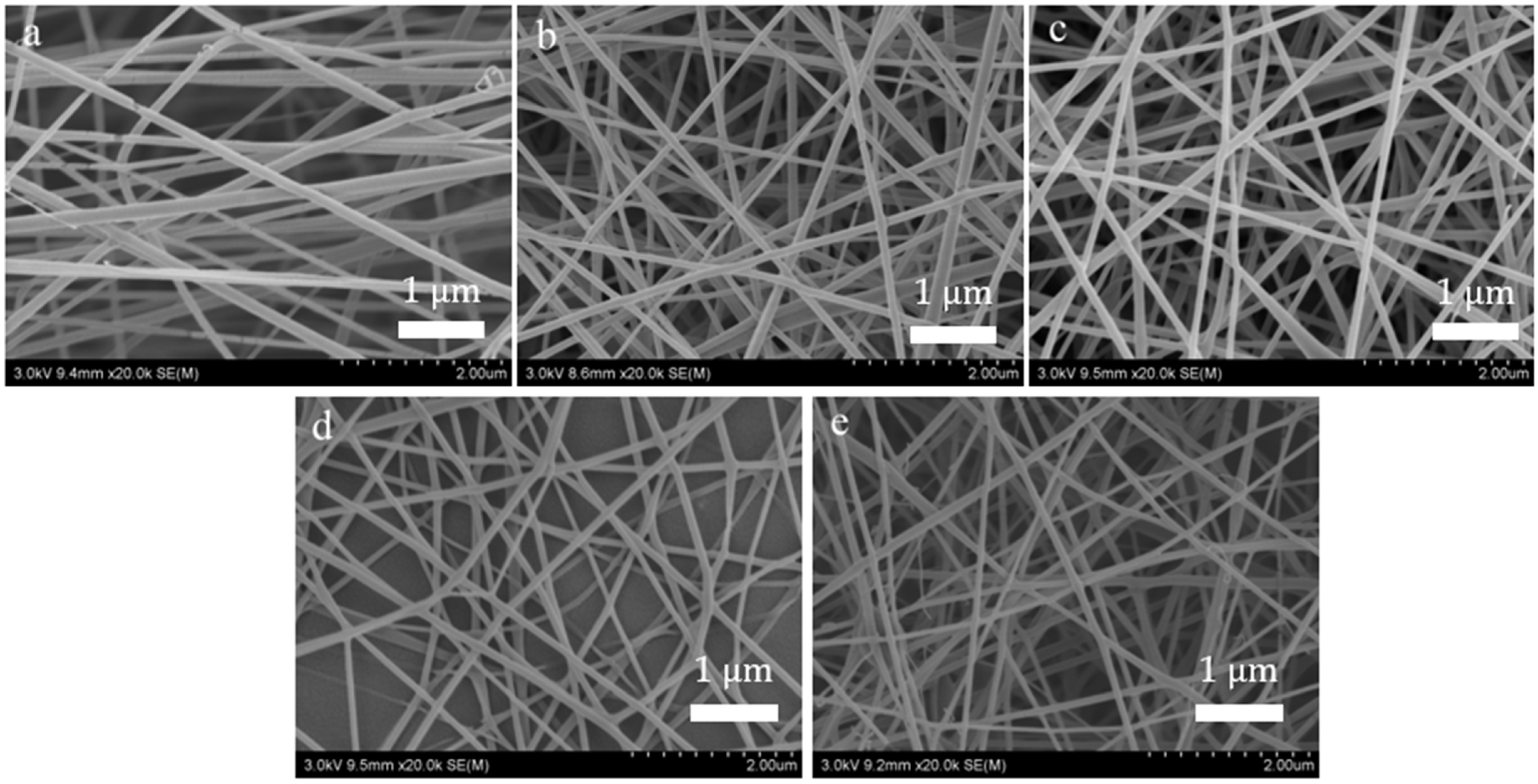
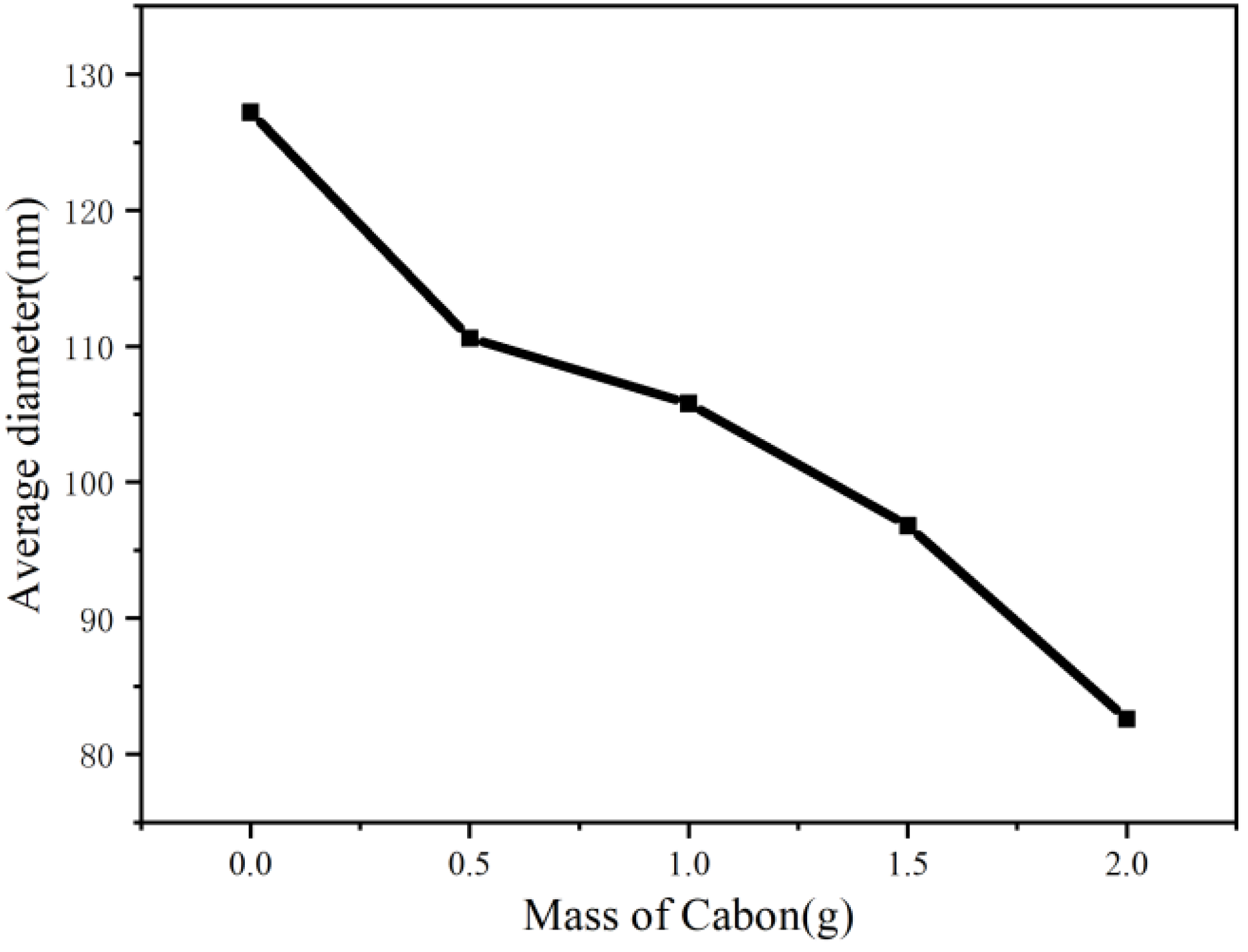
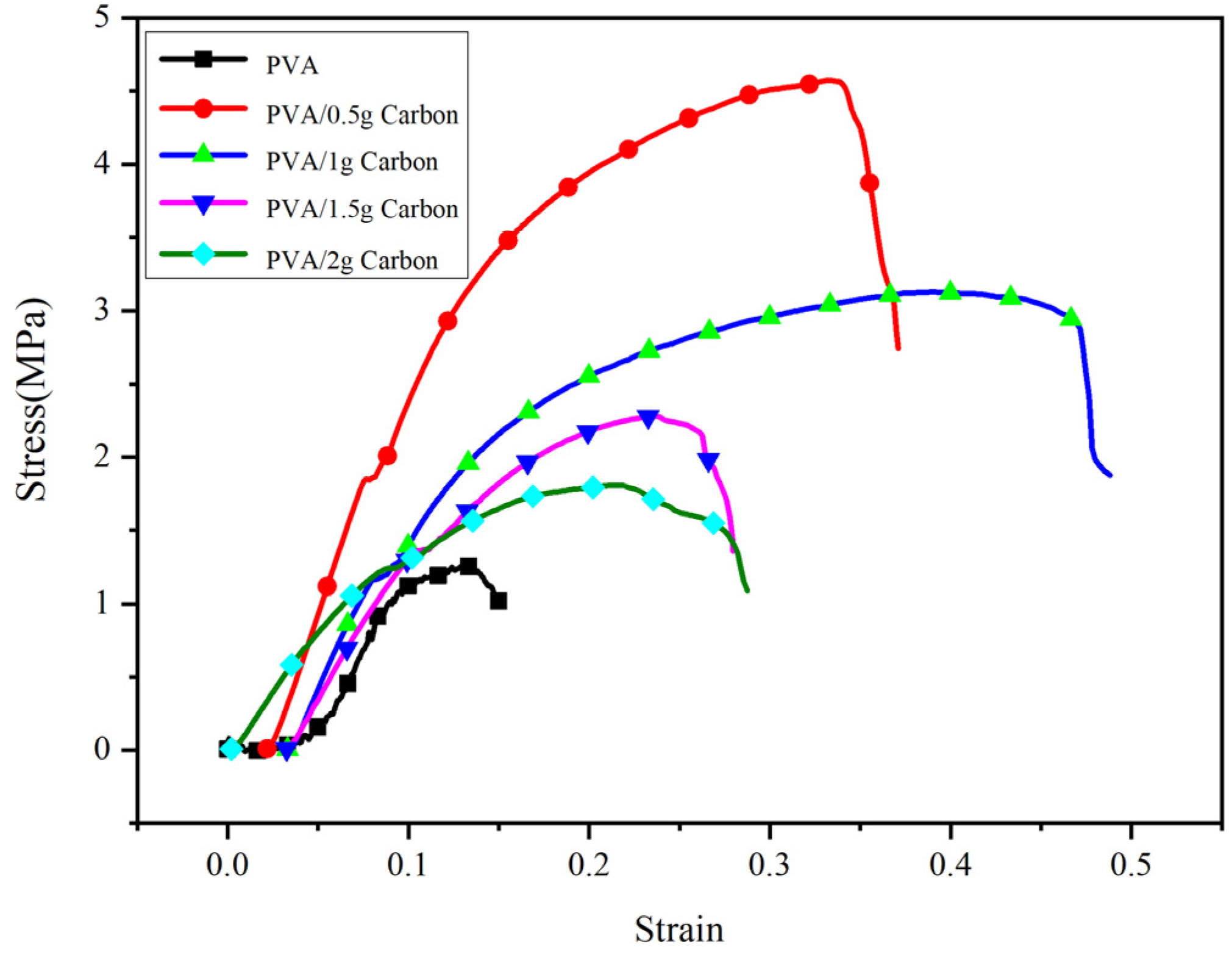
Publisher’s Note: MDPI stays neutral with regard to jurisdictional claims in published maps and institutional affiliations. |
© 2021 by the authors. Licensee MDPI, Basel, Switzerland. This article is an open access article distributed under the terms and conditions of the Creative Commons Attribution (CC BY) license (https://creativecommons.org/licenses/by/4.0/).
Share and Cite
Tian, D.; He, C. From Inner Topological Structure to Functional Nanofibers: Theoretical Analysis and Experimental Verification. Membranes 2021, 11, 870. https://doi.org/10.3390/membranes11110870
Tian D, He C. From Inner Topological Structure to Functional Nanofibers: Theoretical Analysis and Experimental Verification. Membranes. 2021; 11(11):870. https://doi.org/10.3390/membranes11110870
Chicago/Turabian StyleTian, Dan, and Chunhui He. 2021. "From Inner Topological Structure to Functional Nanofibers: Theoretical Analysis and Experimental Verification" Membranes 11, no. 11: 870. https://doi.org/10.3390/membranes11110870
APA StyleTian, D., & He, C. (2021). From Inner Topological Structure to Functional Nanofibers: Theoretical Analysis and Experimental Verification. Membranes, 11(11), 870. https://doi.org/10.3390/membranes11110870




